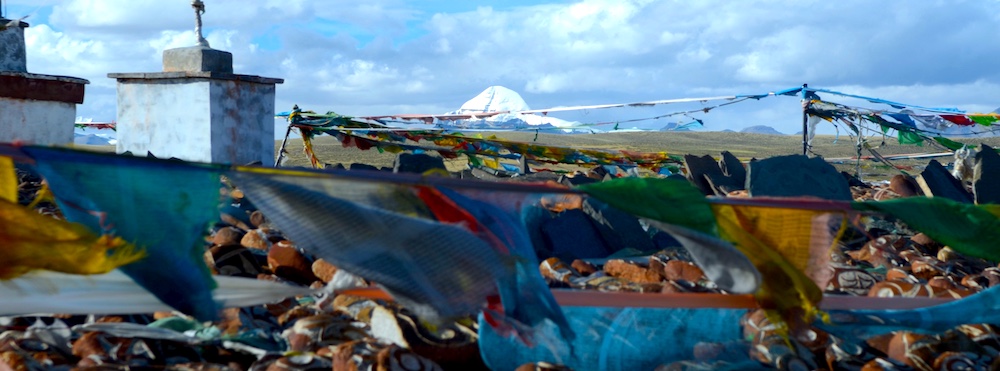Revered in four religions, including Hinduism and Buddhism, Mount Kailash is the mythical Mount Meru, the world pillar and center of the universe. This sacred mountain lies in the far west of Tibet, in the Gangtise Mountain Range in Ngari Prefecture. Not only is this mountain holy for millions of people, but it also lies close to the sources of the four longest rivers in Asia, all of which rise in Tibet.

Mount Kailash abounds with myths and legends, from the Hindu belief that it is the earthly representation of the home of Lord Shiva to the tales of the legendary battle between the Buddhist master, Milarepa, and the Bon mage, Naro Bon-Chung, was fought on its holy slopes. The mountain is considered to be so sacred that climbing is forbidden, and its religious summit has never been reached. Every year thousands of devotees and tourists travel to Tibet to pilgrim the mount Kailash.
Traveling to Kailash in the autumn Season
While travel to Mount Kailash can be done throughout most of the year, there are specific times when it is better to make the trek around the ritual kora route than others, and one of those perfect times is in the autumn.
Autumn in Tibet runs from late September to the end of October in the Ngari region, as the winter comes in earlier this far in the northwest of Tibet. One of the tour’s highlights to Mount Kailash is the trek, a 52-kilometer route around the holy mountain done by thousands of Hindu and Buddhist pilgrims every year. While this trek can be done in spring and summer, autumn is the best time to make the journey.

Once the rainy season has passed, the land retains its lush green look yet is drier, and the skies become more apparent than at any other time of year. The weather is still warm enough to be comfortable, and without the monsoon, there is very little rain on the plateau in the far west of the region.
As the autumn progresses, the leaves on the trees around Mount Kailash’s valley areas turn a burnished shade of brown, red, and gold, ready to fall to the ground and cover the valleys with carpets of stunning colors. The grasses in the region also change color as the land dries up more, turning a beautiful golden color from the lush green of the summer months.
Kailash kora in autumn
The kora route around Mount Kailash is considered one of the most sacred and auspicious koras in the world, and this 52-kilometer trek is one of the most arduous and challenging treks in Tibet. While it only takes three days to complete the tour, you travel up to altitudes above 5,000 meters during the excursion, and the climb to the highest pass on the route, Dolma La, is steep and over rough terrain.
If the spring is the time of new growth and rebirth, then the autumn is the time of agelessness, when the landscape around Mount Kailash appears to be drying out yet is even more beautiful than at any other time of year. The weather is also a little colder than in spring, making it easier to trek, as you are less likely to sweat in the cooler climate on this challenging trekking route.

You will also find that there are fewer tourists and pilgrims on the trail around the mountain in October, as the primary season for pilgrimage to Mount Kailash is in the late spring, around the end of May. It is the time of the Saga Dawa Festival, which is celebrated heavily in the Mount Kailash are, with the flagpole at Tengboche being lowered and the prayer flags replaced in an ancient ritual. Saga Dawa is also when many Indian Hindu pilgrims make the journey to the sacred mountain, further increasing the crowds making their way around the kora route.
Best tour for Mount Kailash in autumn
While several tours run throughout the year, however, our best time for traveling to Mount Kailash is in the autumn. The most famous Kailash tour is the 15-day Kailash Group Tour, a join-in tour that allows you to get a better experience of the people and culture of Tibet, and gain a more profound spiritual insight into the religious significance of Mount Kailash.
The tour does not only go to Kailash but also includes a short time of the sights of Lhasa before heading out along the famous Friendship Highway through Gyantse to Shigatse and taking in Mount Everest Base Camp. Then it is north to Mount Kailash and Lake Manasarovar, the sacred lake that lies a short distance to the south of Mount Kailas. It is believed to be where Maya conceived Buddha.

The tour also includes a three-day trek around the kora route of Mount Kailash, traveling from monastery to monastery as you progress around the most promising kora route in Tibetan Buddhism, which is believed to bring you closer to enlightenment. After completing the trek, you will get to travel to the holy Lake Manasarovar and spend some time on its stunning shores, exploring the lakeside and the monasteries that surround it.
